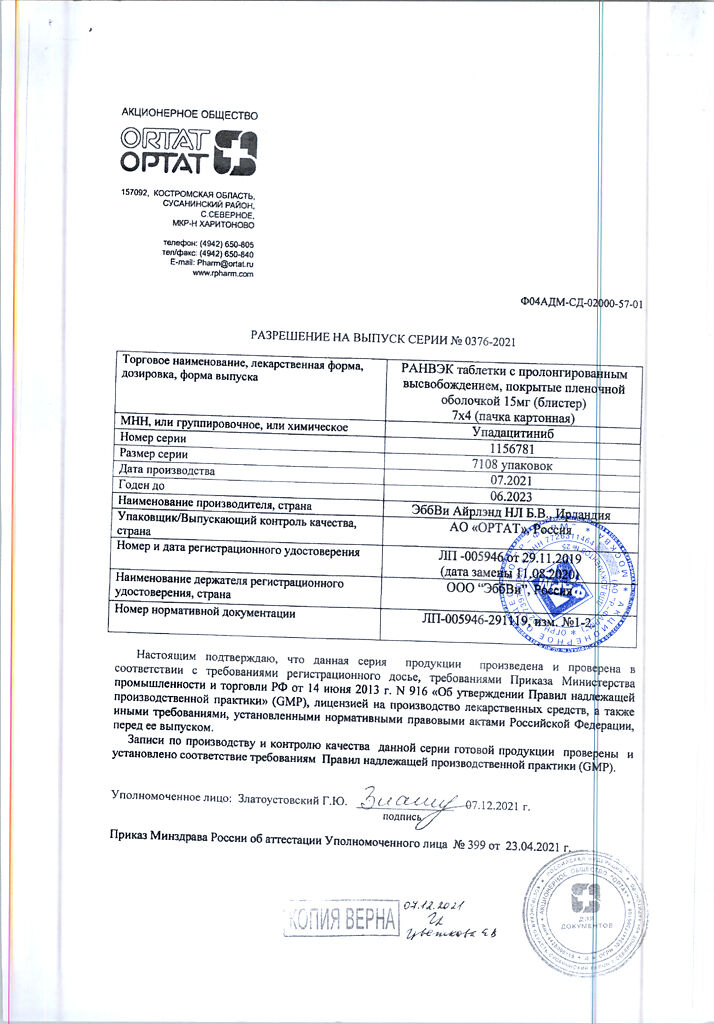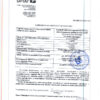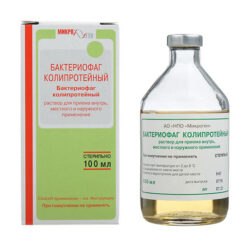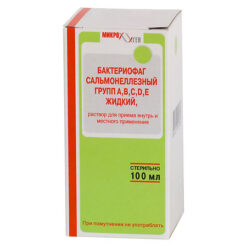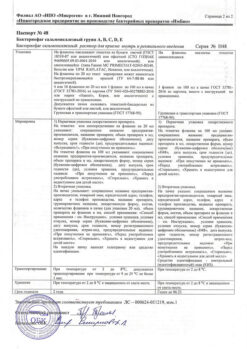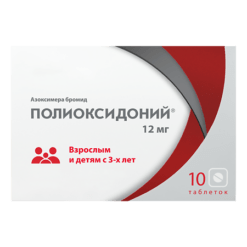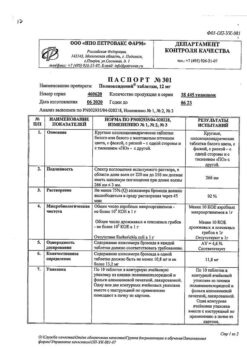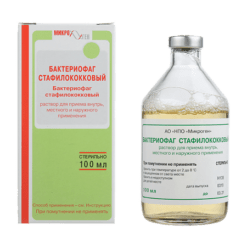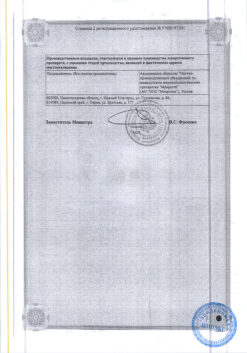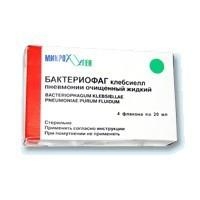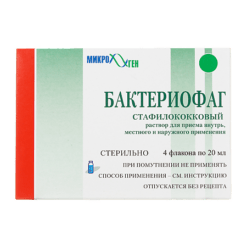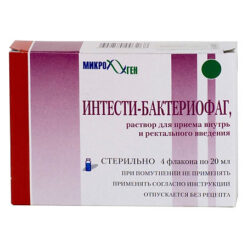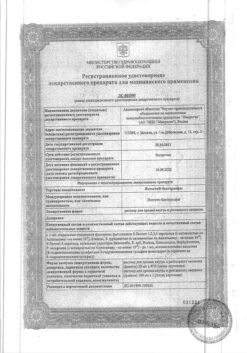No products in the cart.
Ranvek, 15 mg 28 pcs.
€638.18 €531.82
Description
Selective immunosuppressants
Pharmacological properties
Pharmacodynamics
Mechanism of action
Janus kinases (JAKs) are important intracellular enzymes that are involved in cytokine or growth factor signaling and are also involved in a wide range of cellular processes, including inflammatory responses, hematopoiesis and immune surveillance. The Janus kinase family of enzymes is represented by four JAK proteins, JAK1, JAK2, JAK3, and TYK2, which work in pairs to phosphorylate and activate signal transporter proteins and activators of transcription (STAT). The phosphorylation process, in turn, modulates gene expression and cell function. JAK1 plays an important role in cytokine signaling of inflammation, while JAK2 is important for erythrocyte maturation, JAK3 is involved in immune surveillance and regulation of lymphocyte function.
Upadacitinib is a selective reversible inhibitor of JAK1. Upadicitinib is a more potent inhibitor of JAK1 compared to JAK2 and JAK3. In activity studies on cell cultures to predict pharmacodynamic response in vivo, upadacitinib showed 50-70 times higher selectivity for JAK1 than for JAK2 and more than 100 times higher selectivity for JAK3.
Pharmacodynamic effects
Inhibition of IL-6-induced STATS phosphorylation and inhibition of IL-7-induced STAT5 phosphorylation
Administration of upadacitinib (in immediate-release dosage form) in healthy volunteers resulted in dose- and concentration-dependent inhibition of IL-6-induced (JAK1/JAK2) phosphorylation of STAT3 and IL-7-induced (JAK1/JAK3) phosphorylation of STAT5 in blood. Maximum inhibition was observed 1 hour after drug administration with a return of phosphorylation values to values close to baseline at the end of drug administration.
Lymphocytes
A slight transient increase in mean absolute lymphocyte counts from baseline up to 36 weeks was observed during treatment with upadecitinib. Lymphocyte counts gradually returned to baseline or near baseline with continued treatment.
The immunoglobulins
In the control period, there was a slight decrease in blood IgG and IgM concentrations compared to baseline during treatment with upadacitinib; however, the mean values at baseline and at all visits were in the normal range.
High-sensitivity C-reactive protein
In the first week of therapy with upadatinib, there was a significant decrease in high-sensitivity C-reactive protein concentration compared to baseline; this effect persisted throughout the treatment period.
Cardioelectrophysiology
The effect of upadecitinib on QTc interval length was evaluated in patients who received single and multiple doses of upadecitinib. Upadacitinib does not cause prolongation of the QTc interval at therapeutic or higher plasma concentrations.
Pharmacokinetics
In the therapeutic dose range, the plasma concentration of upadecitinib is proportional to the dose. The drug reaches equilibrium plasma concentrations within 4 days with slight accumulation after administration once daily for several days. The pharmacokinetic properties of RANVEC are shown in Table 1.
Table 1. Pharmacokinetic properties of the drug RANVEC
| Absorption | ||
| Tmax (h) | 2-4 | |
| Effect of high-fat foods (compared with fasting intake) | No clinically significant effect AUC: ↑ 29%, Cmax ↑ 39% | |
| Distribution | ||
| Binding to plasma proteins (%) | 52 | |
| Distribution coefficient of drug in blood/plasma | 1.0 | |
| Metabolism | ||
| Metabolism | CYP3A, CYP2D6 (negligible) No active metabolites | |
| Excretion | ||
| Periodicitytr> | End phase t1/2 elimination half-life (h) | 9-14 |
| Urinary excretion unchanged (%)a | 24 | |
| Fecal excretion unchanged (%)a | 38 | |
| Excretion as metabolites (%)a | 34 | |
| a Based on administration of a single dose of [14C]upadacytinib immediate release solution in a mass balance study. | ||
Special patient groups
Body weight, sex, race, age
Body weight, sex, race, ethnicity, and age had no clinically significant effect on upadacitinib plasma concentrations.
Patients with impaired renal function
Patients with impaired renal function have no clinically significant effect on the plasma concentration of upadecitinib. Value of AUC of upadacytinib was 18%, 33% and 44% higher in patients with mild, moderate and severe renal dysfunction, respectively, compared to that in patients with normal renal function. The Cmax value of upadecitinib in patients with normal renal function was similar to that in patients with impaired renal function.
Patients with impaired hepatic function
Mild (Child-Pugh grade A) and moderate (Child-Pugh grade B) hepatic impairment has no clinically significant effect on the plasma concentration of upadecitinib. The AUC of upadecitinib was 28% and 24% higher in patients with mild and moderate hepatic impairment, respectively, compared to that in patients with normal hepatic function.
The Cmax value of upadecitinib remained unchanged in patients with mild hepatic impairment and was increased by 43% in patients with moderate hepatic impairment compared to normal hepatic function. The effect of upadecitinib in patients with severe (Child-Pugh grade C) hepatic impairment has not been studied.
Interaction with other medicinal products
The in vitro metabolism of upadatinib is mediated by cytochrome CYP3A with minimal involvement of cytochrome CYP2D6. The effect of co-administration with other drugs on the plasma concentration of upadacitinib is shown in Table 2.
Table 2. Results of a study of the pharmacokinetics of upadacitinib when co-administered with other drugs
| Co-administered drug | Mode of dosing of co-administered drug | Mode dosing upadacitinib | N | Ratio (90% CI)a | Clinical effect | ||||||
| Cmax | AUC | ||||||||||
| Ketoconazole | 400 mg 1 p/d×6 days | 3 mg onceb | 11 | 1.70 (1.55-1.89) | 1.75 (1.62-1.88) | Use with caution in long-term treatment | |||||
| Rifampicin | 600 mg 1 p/d×9 days | 12 mg onceb | 12 | For long-term treatment.td> 12 | 0.49 (0.44-0.55) | 0.39 (0.37-0.42) | May reduce efficacy | ||||
| CI – confidence interval a Comparison of the ratio of Cmax and AUC values when co-administering the drug with upadecitinib compared to when using upadecitinib without co-administering the other drugs. b Upadacitinib was used in a dosage form with immediate release. | |||||||||||
Methotrexate, OATP1B inhibitors and drugs that alter pH (e.g., antacids or proton pump inhibitors) have no effect on plasma levels of upadacitinib. The metabolic phenotype associated with CYP2D6 activity has no effect on the pharmacokinetics of upadacitinib, which means that CYP2D6 inhibitors have no clinically significant effect on the plasma concentration of upadacitinib.
The effect of upadacitinib on plasma concentrations of other drugs is shown in Table 3.
Table 3. Changes in the pharmacokinetics of co-administered drugs in the presence of upadacitinib
| Co-administered drug | Dosing regimen of co-administered drug | Dosing regimen of upadacitinib | N | Ratio (90% CI)a | Clinical effect | |||
| Cmax | AUC | |||||||
| Midazolam | 5 mg once | 30 mg 1 p/d×10 days | 20 | 0.74 (0.68-0.80) | 0.74 (0.68-0.80) | No dose adjustment required | ||
| 30 mg 1 p/day/td> | ||||||||
| Rosuvastatin | 5 mg once | 30 mg 1 p/d×10 days | 12 | 0.77 (0.63-0.94) | 0.67 (0.56-0.82) | No dose adjustment required | ||
| Atorvastatin | 10 mg once | 30 mg 1 p/day×10 days | 24 | 0.88 (0.79-0.97) | 0.77 (0.70-0.85) | Dose adjustment not required | ||
| CI – confidence interval a Comparison of the ratio of Cmax and AUC values when co-administering the drug with upadecitinib versus when using the drug without co-administering upadecitinib. Upadecitinib has no clinically significant effect on plasma concentrations of ethinylestradiol, levonorgestrel, methotrexate or drugs that are CYP1A2, CYP2B6, CYP2D6, CYP2C19 and CYP2C9 cytochrome substrates. | ||||||||
Summary of clinical trials
The efficacy and safety of RANVEC at a dose of 15 mg once daily was evaluated in five randomized, double-blind, multicenter phase 3 studies in adult patients with moderate to highly active rheumatoid arthritis.
The drug RANVEC was compared with placebo in the SELECT-COMPARE, SELECT-NEXT and SELECT-BEYOND trials; methotrexate in the SELECT-EARLY and SELECT-MONOTHERAPY trials; and adalimumab in the SELECT-COMPARE trial.
The study population included the following patients:
– methotrexate-naïve (SELECT-EARLY);
– with inadequate response to methotrexate therapy (SELECT-MONOTHERAPY and SELECT-COMPARE);
– with inadequate response to traditional baseline anti-inflammatory drugs (BVDs) (SELECT-NEXT);
– with inadequate response to at least one genetically engineered biologic drug (GEBP) or intolerance (SELECT-BEYOND).
In all studies, significantly more patients who received RANVEC at a dose of 15 mg achieved ACR20, ACR50 and ACR70 responses after 12 weeks compared to control groups (placebo, methotrexate and adalimumab), except for ACR70 in the SELECT-BEYOND study.
There was a rapid onset of treatment effect across all parameters, with a significant difference in ACR20 noted at week 1, followed by an increase over 12 weeks.
Sustained response to treatment (in combination with methotrexate or as monotherapy) by ACR20/50/70 parameters was observed for at least 1 year. Treatment with RANVEC at a dose of 15 mg in monotherapy or in combination with conventional DMARDs resulted in statistically significant improvements in individual ACR scale components, including number of painful, swollen joints, patient and physician assessment of general health, HAQ-DI, pain score, and high-sensitivity C-reactive protein levels compared to placebo or methotrexate.
All studies reported significantly higher remission rates on the DAS28-CPB index <2.6 in the RANVEC 15-mg treatment group compared to control groups.
In all studies, treatment with RANVEC at a dose of 15 mg resulted in a significant reduction in the duration and severity of morning stiffness compared to placebo and methotrexate.
The 15-mg dose of RANVEC significantly slowed the progression of structural joint damage compared to placebo at weeks 26 and 48 in the SELECT-COMPARE trial, and to monotherapy compared to methotrexate at week 24 in the SELECT-EARLY trial. The proportion of patients without radiological progression (mTSS change ≤0) with treatment with RANVEC 15 mg was significantly higher compared with placebo at weeks 26 and 48 and compared with methotrexate at week 24.
Indications
Indications
Treatment of moderate and severe rheumatoid arthritis in adult patients.
Pharmacological effect
Pharmacological effect
Selective immunosuppressants
Pharmacological properties
Pharmacodynamics
Mechanism of action
Janus kinases (JAKs) are important intracellular enzymes that are involved in cytokine or growth factor signaling and are also involved in a wide range of cellular processes, including inflammatory responses, hematopoiesis, and immune surveillance. The Janus kinase family of enzymes consists of four JAK proteins: JAK1, JAK2, JAK3 and TYK2, which work in pairs to phosphorylate and activate signal transducers and activators of transcription (STAT) proteins. The phosphorylation process, in turn, modulates gene expression and cell function. JAK1 plays an important role in cytokine signaling of inflammation, while JAK2 is important for red blood cell maturation, JAK3 is involved in immune surveillance and regulation of lymphocyte function.
Upadacitinib is a selective reversible inhibitor of JAK1. Upadacitinib is a more potent inhibitor of JAK1 compared to JAK2 and JAK3. In cell culture studies to predict pharmacodynamic response in vivo, upadacitinib demonstrated selectivity for JAK1 50-70 times greater than for JAK2 and more than 100 times greater than for JAK3.
Pharmacodynamic effects
Inhibition of IL-6-induced STATS phosphorylation and inhibition of IL-7-induced STAT5 phosphorylation
Administration of upadacitinib (immediate-release formulation) to healthy volunteers resulted in dose- and concentration-dependent inhibition of IL-6 (JAK1/JAK2)-induced STAT3 phosphorylation and IL-7 (JAK1/JAK3)-induced STAT5 phosphorylation in the blood. Maximum inhibition was observed 1 hour after taking the drug, with phosphorylation values returning to values close to the initial level upon termination of drug use.
Lymphocytes
During treatment with upadacitinib, there was a small transient increase in mean absolute lymphocyte count from baseline until week 36. The lymphocyte count gradually returned to baseline or close to baseline with continued treatment.
Immunoglobulins
In the controlled period, during therapy with upadacitinib, a slight decrease in the concentrations of IgG and IgM in the blood was observed compared to baseline values; however, mean values at baseline and at all visits were within the normal range.
High sensitivity C-reactive protein
During the first week of upadacitinib therapy, there was a significant decrease in high-sensitivity C-reactive protein concentrations compared to baseline, an effect that persisted throughout the treatment period.
Cardioelectrophysiology
The effect of upadacitinib on the QTc interval was assessed in patients who received single and multiple doses of upadacitinib. Upadacitinib does not prolong the QTc interval at therapeutic or above therapeutic plasma concentrations.
Pharmacokinetics
Over the therapeutic dose range, upadacitinib plasma concentrations are dose proportional. The drug reaches equilibrium concentrations in the blood plasma within 4 days with minor accumulation after administration once a day for several days. The pharmacokinetic properties of the drug RANVEK are presented in Table 1.
Table 1. Pharmacokinetic properties of the drug RANVEK
Suction
Tmax (h)
2-4
Effects of high fat foods
(compared to taking on an empty stomach)
No clinically significant effect
AUC: ↑ 29%, Cmax ↑ 39%
Distribution
Plasma protein binding (%)
52
Drug distribution coefficient
substances in blood/plasma
1.0
Metabolism
Metabolism
CYP3A, CYP2D6 (not significant)
No active metabolites
Removal
Half-life in the final phase t1/2 (h)
9-14
Excretion unchanged in urine (%)a
24
Excretion unchanged in feces (%)a
38
Excretion as metabolites (%)a
34
a Based on single dose administration of immediate-release [14C] upadacitinib solution in a mass balance study.
Special patient groups
Body weight, gender, race, age
Body weight, sex, race, ethnicity, and age did not have a clinically significant effect on upadacitinib plasma concentrations.
Patients with impaired renal function
Impaired renal function does not have a clinically significant effect on plasma concentrations of upadacitinib. The AUC of upadacitinib was 18%, 33%, and 44% higher in patients with mild, moderate, and severe renal impairment, respectively, compared with that in patients with normal renal function. The Cmax of upadacitinib in patients with normal renal function was similar to that in patients with impaired renal function.
Patients with liver dysfunction
Mild (Child-Pugh class A) and moderate (Child-Pugh class B) liver dysfunction does not have a clinically significant effect on the plasma concentrations of upadacitinib. The AUC of upadacitinib was 28% and 24% higher in patients with mild and moderate hepatic impairment, respectively, compared with that in patients with normal hepatic function.
The Cmax of upadacitinib remained unchanged in patients with mild hepatic impairment and increased by 43% in patients with moderate hepatic impairment compared with normal liver function. The effect of upadacitinib in patients with severe (Child-Pugh class C) hepatic impairment has not been studied.
Interaction with other drugs
Metabolism of upadacitinib in vitro is mediated by cytochrome CYP3A with minimal participation of cytochrome CYP2D6. The effect of co-administration with other drugs on the plasma concentrations of upadacitinib is presented in Table 2.
Table 2. Results of a study of the pharmacokinetics of upadacitinib when used in combination with other drugs
Co-administered drug
Dosage regimen of the co-administered drug
Mode
dosing
upadacitinib
N
Ratio (90% CI)a
Clinical
effect
Сmax
AUC
Ketoconazole
400 mg 1 time/day×6 days
3 mg
onceb
11
1.70
(1.55-1.89)
1.75
(1.62-1.88)
Use with caution during long-term treatment
Rifampicin
600 mg 1 time/day×9 days
12 mg
onceb
12
0.49
(0.44-0.55)
0.39
(0.37-0.42)
May reduce effectiveness
CI – confidence interval
a Comparison of the ratio of Cmax and AUC values when co-administering the drug with upadacitinib compared with the use of upadacitinib without co-administration with other drugs.
b Upadacitinib was administered in an immediate-release dosage form.
Methotrexate, OATP1B inhibitors and drugs that alter pH (for example, antacids or proton pump inhibitors) do not affect the plasma levels of upadacitinib. The metabolic phenotype associated with CYP2D6 activity does not affect the pharmacokinetics of upadacitinib, meaning that CYP2D6 inhibitors do not have a clinically significant effect on upadacitinib plasma concentrations.
The effects of upadacitinib on plasma concentrations of other drugs are shown in Table 3.
Table 3. Changes in the pharmacokinetics of co-administered drugs in the presence of upadacitinib
Co-administered drug
Dosage regimen of the co-administered drug
Mode
dosing
upadacitinib
N
Ratio (90% CI)a
Clinical
effect
Сmax
AUC
Midazolam
5 mg
once
30 mg 1 time/day×10 days
20
0.74
(0.68-0.80)
0.74
(0.68-0.80)
No dose adjustment required
Rosuvastatin
5 mg
once
30 mg 1 time/day×10 days
12
0.77
(0.63-0.94)
0.67
(0.56-0.82)
No dose adjustment required
Atorvastatin
10 mg
once
30 mg 1 time/day×10 days
24
0.88
(0.79-0.97)
0.77
(0.70-0.85)
No dose adjustment required
CI – confidence interval
a Comparison of the ratio of Cmax and AUC values when co-administering the drug with upadacitinib compared to using the drug without co-administration with upadacitinib.
Upadacitinib does not have a clinically significant effect on plasma concentrations of ethinyl estradiol, levonorgestrel, methotrexate, or drugs that are substrates of cytochrome CYP1A2, CYP2B6, CYP2D6, CYP2C19 and CYP2C9.
Brief information about clinical studies
The efficacy and safety of RANVEC 15 mg once daily was assessed in five randomized, double-blind, multicenter, phase 3 studies in adult patients with moderate to severe disease activity rheumatoid arthritis.
RANVEK was compared with placebo in the SELECT-COMPARE, SELECT-NEXT, and SELECT-BEYOND studies; methotrexate – in the SELECT-EARLY and SELECT-MONOTHERAPY studies; adalimumab in the SELECT-COMPARE study.
The study population included the following patients:
• methotrexate-naive (SELECT-EARLY);
• with insufficient response to methotrexate therapy (SELECT-MONOTHERAPY and SELECT-COMPARE);
• with an inadequate response to traditional disease-modifying anti-inflammatory drugs (DMARDs) (SELECT-NEXT);
• with an inadequate response to at least one genetically engineered biological drug (GEBD) or intolerance to it (SELECT-BEYOND).
Across all studies, significantly more patients receiving RANVEC 15 mg achieved ACR20, ACR50, and ACR70 responses at 12 weeks compared with control groups (placebo, methotrexate, and adalimumab), with the exception of ACR70 in the SELECT-BEYOND trial.
For all parameters, a rapid onset of treatment effect was noted, with a significant difference in ACR20 noted in the first week, followed by an increase over 12 weeks.
Maintaining a sustained response to treatment (in combination with methotrexate or monotherapy) according to ACR20/50/70 parameters was observed for at least 1 year. Treatment with RANVEC at a dose of 15 mg in monotherapy or in combination with traditional DMARDs led to a statistically significant improvement in the individual components of the ACR scale. including number of tender, swollen joints, patient and physician ratings of general health, HAQ-DI, pain scores, and high-sensitivity C-reactive protein levels compared with placebo or methotrexate.
In all studies, a significantly higher rate of achieving remission according to the DAS28-CPB index < 2.6 was noted in the treatment group with RANVEK at a dose of 15 mg compared to the control groups.
In all studies, treatment with RANVEC 15 mg led to a significant reduction in the duration and severity of morning stiffness compared to placebo and methotrexate.
Treatment with RANVEC 15 mg significantly slowed the progression of structural joint damage compared with placebo at weeks 26 and 48 in the SELECT-COMPARE study, and as monotherapy compared with methotrexate at week 24 in the SELECT-EARLY study. The proportion of patients without radiographic progression (mTSS change ≤0) when treated with RANVEC 15 mg was significantly higher compared with placebo at weeks 26 and 48 and compared with methotrexate at week 24.
Special instructions
Special instructions
Severe infections
There is evidence of severe and sometimes fatal infections in patients with rheumatoid arthritis treated with RANVEK. The most common severe infections that have been observed with the use of RANVEK. included pneumonia and cellulitis (see section Side effects). Opportunistic infections such as tuberculosis, herpes zoster multidermatome, oral/esophageal candidiasis and cryptococcosis have been reported with the use of RANVEK.
RANVEK should not be used to treat patients with severe active infections, including localized infections. The risks and benefits of therapy should be considered before starting RANVEK in patients:
• with chronic or recurrent infection;
• were in contact with a patient with tuberculosis;
• with indications of a history of severe or opportunistic infection;
• who have lived or traveled in areas with an increased risk of infection with tuberculosis or endemic mycosis;
• with concomitant diseases that increase the risk of developing infection.
Patients should be closely monitored for signs or symptoms of infection during and after therapy with RANVEK. If the patient develops a severe or opportunistic infection, the drug should be interrupted. If a patient develops a new infectious disease during therapy with RANVEK, it is necessary to quickly conduct a complete diagnostic examination suitable for immunocompromised patients and begin appropriate therapy. The patient should be monitored closely and RANVEC should be discontinued if the patient does not respond to anti-infective therapy. Resumption of use of the drug RANVEK is possible after ensuring complete control of the infectious disease.
Tuberculosis
Before starting therapy with RANVEK, patients should be screened for the presence of tuberculosis. RANVEK therapy should not be prescribed to patients with active tuberculosis. If patients have previously untreated latent tuberculosis, the use of anti-tuberculosis therapy should be considered before starting therapy with RANVEK.
Patients should be closely monitored for signs and symptoms of tuberculosis, including patients who test negative for latent tuberculosis before initiating therapy.
Reactivation of viral infection
In clinical studies, cases of reactivation of viral infections (for example, herpes zoster) have been observed (see section Side effects). If a patient develops herpes zoster, temporary interruption of RANVEK therapy should be considered until the episode resolves.
Before and during therapy with RANVEK, patients should be assessed for the presence of viral hepatitis and patients should be monitored for reactivation of viral infection in accordance with clinical guidelines. Patients who tested positive for antibodies to hepatitis C virus antigen or for hepatitis C virus RNA were excluded from clinical studies. Patients who tested positive for antibodies to hepatitis B surface antigen or for hepatitis B virus DNA were excluded from clinical studies. If hepatitis B DNA is detected while taking RANVEK, you should consult a specialist in the treatment of liver diseases.
Vaccination
There are no data on the response of patients taking the drug to vaccination with live or inactivated vaccines. The use of live attenuated vaccines during or immediately before the start of therapy with RANVEK is not recommended. Before using the drug, all patients are recommended to be fully vaccinated in accordance with current immunization recommendations, including preventive vaccination against herpes zoster.
Malignant neoplasms
Patients with rheumatoid arthritis are at increased risk of developing malignancies, including lymphomas. The use of immunosuppressants may increase the risk of developing malignancies, including lymphomas. The effect of therapy with RANVEK on the development of malignant neoplasms has not been established.
In clinical studies of the drug RANVEK, the development of malignant neoplasms was observed (see section Side effects). The benefits and risks of using the drug should be assessed before starting therapy in patients diagnosed with a malignant neoplasm other than successfully treated NMSC, and before continuing therapy with RANVEK in patients in whom a malignant neoplasm developed during therapy.
Non-melanocytic skin cancer
Cases of NMSC have been reported in patients treated with RANVEK. Regular skin screening is recommended for patients at increased risk of developing skin cancer.
Laboratory indicators
Neutropenia: therapy with RANVEK was accompanied by an increase in the incidence of neutropenia (ANC less than 1000 cells/mm³). A direct relationship between the number of neutrophils and the occurrence of severe infections has not been established.
Lymphopenia: in clinical studies of the drug RANVEK, cases of ACL reduction to values less than 500 cells/mm³ were observed. There was no relationship established between a decrease in the lymphocyte count to the lower limit of normal with the development of severe infection.
Anemia: in clinical studies of RANVEK, cases of hemoglobin levels decreasing to 8 g/dL or lower were noted.
Most of the above-mentioned changes in laboratory parameters were transient and reached normal levels when therapy was temporarily interrupted.
The appropriateness of using RANVEK should be assessed initially and then in accordance with routine patient management. Treatment should not be started or should be temporarily interrupted in patients who meet the criteria specified in Table 4 (see Dosage and Administration).
Lipids
Therapy with RANVEK was accompanied by an increase in the concentration of lipids, including the level of total cholesterol, low-density lipoprotein (LDL) and high-density lipoprotein (HDL) (see section Side effects). With statin therapy, elevated LDL levels decreased to levels observed before treatment. The effect of the observed increase in lipid concentrations on the incidence of cardiovascular diseases and mortality from cardiovascular diseases has not been established.
Patients should be monitored 12 weeks after initiation of therapy and thereafter in accordance with clinical guidelines for hyperlipidemia.
Increased liver enzyme activity
Treatment with RANVEK was associated with an increased incidence of elevated liver enzyme levels compared with placebo.
The appropriateness of using RANVEK should be assessed initially and then in accordance with routine patient management.
It is recommended to immediately investigate the cause of elevated liver enzyme levels to identify possible cases of drug-induced liver damage.
If an increase in ALT or AST is observed during routine patient management and drug-induced liver injury is suspected, therapy with RANVEC should be interrupted until this diagnosis has been excluded.
Immunosuppressants
Concomitant use of RANVEC with other immunosuppressants such as azathioprine, cyclosporine, tacrolimus, biologic drugs or other JAK inhibitors has not been studied in clinical trials and is not recommended as the risk associated with additive immunosuppressive effects cannot be excluded.
Impact on the ability to drive vehicles and machinery
The drug RANVEK does not affect the ability to drive vehicles and operate machinery.
Active ingredient
Active ingredient
Upadacitinib
Composition
Composition
Active ingredient:
upadacitinib hemihydrate (in terms of anhydrous upadacitinib) – 15.4 (15.0) mg;
Excipients: microcrystalline cellulose, hypromellose 2208, 3550 mPa•s, mannitol, tartaric acid, colloidal silicon dioxide, magnesium stearate;
Film coating Opadry® II Purple: polyvinyl alcohol, macrogol 3350, talc, titanium dioxide, black iron oxide, red iron oxide E172.
Pregnancy
Pregnancy
Pregnancy
Data on the use of upadacitinib in pregnant women are limited. The data obtained are not sufficient to inform you about the risks of birth defects and miscarriages associated with the use of this drug.
Animal studies suggest that upadacitinib may affect fetal development.
In embryofetal toxicity studies in rats and rabbits, upadacitinib was teratogenic when animals received upadacitinib during organogenesis at doses 1.6 and 15 times the clinical dose (15 mg) in rats and rabbits, respectively.
Further, according to the results of a pre- and postnatal developmental study in rats, upadacitinib did not cause toxic effects in dams and pups.
The estimated risk of major birth defects and miscarriages for pregnant women is unknown. During any pregnancy, there is still a risk of developing a birth defect, miscarriage, or other adverse effects.
Clinical considerations
Risk to the mother and/or embryo/fetus associated with the disease
Published evidence suggests that increased disease activity is associated with the risk of adverse pregnancy outcomes in women with rheumatoid arthritis. Adverse pregnancy outcomes include preterm birth (before 37 weeks’ gestation), low birth weight (less than 2500 g), and small for gestational age birth.
Evidence from animal studies
Studies in rats and rabbits demonstrated that upadacitinib was teratogenic when administered to animals at doses 1.6 and 15 times the clinical dose of 15 mg (maternal oral doses were 4 mg/kg/day and 25 mg/kg/day, respectively, and were calculated based on AUC).
In two studies of embryofetal development in rats, the drug was administered to animals during the period of organogenesis from the 6th to the 17th day of pregnancy. Upadacitinib demonstrated teratogenicity in rats at all doses tested except the lowest dose of 1.5 mg/kg/day.
At doses of 4, 5, 25, and 75 mg/kg/day, upadacitinib resulted in an increased incidence of humeral and scapular deformities. In addition, administration of a dose of 75 mg/kg/day led to an increase in the incidence of bone deformities in the fore and hind limbs. In addition, an increase in the incidence of rib deformities and skeletal abnormalities was observed at doses of 25 and 75 mg/kg/day, which were also associated with upadacitinib.
In a study of embryofetal development in rabbits, the drug was administered to animals during the period of organogenesis from the 7th to the 19th day of pregnancy. Upadacitinib demonstrated teratogenicity at a dose of 25 mg/kg/day. Among the developmental disorders observed in rabbits associated with the use of the drug at a dose of 25 mg/kg/day, an increase in the incidence of post-implantation fetal death, an increase in the overall incidence and incidence of early embryo resorption, a decrease in fetal body weight and an increase in the incidence of heart defects were noted. In addition, in the group of animals receiving a dose of 25 mg/kg/day, a toxic effect of the drug on females was observed, expressed in a decrease in animal body weight and food consumption, as well as an increase in the frequency of spontaneous abortions.
A study of pre- and postnatal development in rats assessed the development of offspring provided that the mothers were exposed to the drug from the moment of implantation and then throughout nursing until the pups ceased nursing. Since the development of abnormalities caused by the action of the drug during a given period of time may be delayed, observations were continued until the onset of puberty of the offspring. The drug was administered to mothers from the 6th day of pregnancy to the 20th day of lactation. Upadacitinib had no effect on maternal or offspring behavioral and reproductive endpoints at any dose level.
Breastfeeding period
It is unknown whether upadacitinib or its metabolites are excreted in human breast milk. Available data from pharmacodynamics and toxicity studies in animals showed the excretion of upadacitinib into milk.
A risk to newborns and infants cannot be excluded.
RANVEK should not be used during breastfeeding.
Evidence from animal studies
After administration of upadacitinib to lactating female rats, the concentration of upadacitinib in milk was approximately 30 times higher than the concentration of upadacitinib in maternal plasma. About 97% of the substance excreted in milk was the original drug.
Women and men with reproductive potential
Contraception
In animal embryofetal development studies, upadacitinib was teratogenic in rats and rabbits.
Women with preserved reproductive function should use reliable methods of contraception while using RANVEK and for at least 4 weeks after the end of treatment.
Fertility
Animal studies have shown no adverse effects of upadacitinib on reproductive function in males or females of reproductive potential.
Contraindications
Contraindications
Hypersensitivity to the components of the drug
Pregnancy and breastfeeding period
Children under 18 years of age (efficacy and safety have not been studied).
With caution
Caution should be exercised when using RANVEK in patients receiving long-term treatment with strong CYP3A inhibitors.
Concomitant use of RANVEK with other strong immunosuppressants, such as azathioprine, cyclosporine, tacrolimus and steroids, or other JAK inhibitors is not recommended.
The use of RANVEC should be avoided in patients with active severe infection, including localized infections.
Side Effects
Side Effects
Clinical research experience
Because clinical trials are conducted in different settings, the incidence of adverse events observed in clinical trials of a drug cannot be directly compared with rates in clinical trials of another drug and may not reflect rates observed in practice.
A total of 4443 patients with rheumatoid arthritis were treated with upadacitinib in clinical trials, corresponding to 5263 patient-years. Of all patients, 2972 took the drug for at least one year. In the phase 3 studies, 2630 patients received at least 1 15 mg dose of the drug, of which 1607 patients took it for one year.
Data from three placebo-controlled studies (1035 patients treated with 15 mg once daily and 1042 patients treated with placebo) were pooled to assess the safety of 15 mg compared with placebo for 12 to 14 weeks after initiation of therapy.
Table 5. Incidence of adverse reactions (≥ 1%) in patients with rheumatoid arthritis treated with RANVEC 15 mg in placebo-controlled studies
Adverse reaction
RANVEK 15 mg
Placebo
n=1035 (%)
n=1042 (%)
Upper respiratory tract infections (URTIs)*
13.5
9.5
Nausea
3.5
2.2
Cough
2.2
1.0
Fever
1.2
0
*URTI includes: acute sinusitis, laryngitis, nasopharyngitis, oropharyngeal pain, pharyngitis, pharyngitis, rhinitis, sinusitis, tonsillitis and viral upper respiratory tract infections.
Other adverse reactions reported in less than 1% of patients in the RANVEC 15 mg group and at higher rates than in the placebo group included pneumonia, herpes zoster, herpes simplex (including oral herpes), and oral candidiasis.
Description of selected adverse reactions
Infections
In placebo-controlled clinical trials where patients in groups received concomitant therapy with traditional DMARDs, the incidence of infections at 12-14 weeks in the group of patients taking RANVEC at a dose of 15 mg was 27.4% compared with 20.9% in the placebo group. In controlled studies using methotrexate as a comparator, the incidence of infections at 12-14 weeks in the RANVEC 15 mg monotherapy group was 19.5% compared to 24.0% in the methotrexate group. The overall incidence of infections during long-term therapy in the group of patients taking RANVEC 15 mg in all five phase 3 clinical studies (2630 patients) was 93.7 cases per 100 patient-years.
In placebo-controlled clinical trials in which patients were treated concomitantly with traditional DMARDs, the incidence of severe infections at 12 to 14 weeks in patients receiving RANVEC 15 mg was 1.2% compared with 0.6% in the placebo group. In controlled studies using methotrexate as a comparator, the incidence of infections at 12-14 weeks in the RANVEC 15 mg monotherapy group was 0.6% compared to 0.4% in the methotrexate group.
The overall incidence of severe infections during long-term therapy in the group of patients receiving RANVEC 15 mg in all five phase 3 clinical studies was 3.8 cases per 100 patient-years. The most common serious infections were pneumonia and cellulitis. With prolonged use of the drug, the incidence of severe infections did not increase.
Tuberculosis
In placebo-controlled clinical trials where patients in groups received concomitant therapy with traditional DMARDs, there were no cases of active tuberculosis in any of the groups. In studies where methotrexate was used as a comparator drug, there were no cases of tuberculosis development either in the RANVEK monotherapy group at a dose of 15 mg or in the methotrexate group during 12-14 weeks of observation. The overall incidence of active tuberculosis during long-term treatment in the RANVEC 15 mg group in all five phase 3 clinical studies was 0.1 cases per 100 patient-years.
Opportunistic infections (except tuberculosis)
In placebo-controlled clinical trials where patients in groups received concomitant therapy with traditional DMARDs, the incidence of opportunistic infections at 12-14 weeks in the group of patients taking RANVEK at a dose of 15 mg was 0.5% compared to 0.3% in the placebo group. In studies using methotrexate as a comparator drug in the monotherapy group with RANVEK at a dose of 15 mg, there were no cases of opportunistic infections during 12-14 weeks of observation. The incidence of these infections in the methotrexate group was 0.2%. The overall incidence of opportunistic infections during long-term treatment in the group of patients taking RANVEK at a dose of 15 mg in all five phase 3 clinical studies was 0.6 cases per 100 patient-years.
Malignant neoplasms
In placebo-controlled clinical trials in which patients in groups received concomitant therapy with traditional DMARDs, the incidence of malignancies, excluding non-melanocytic skin cancer (NMSC), in the group of patients taking RANVEK at a dose of 15 mg was <0.1% compared with <0.1% in the placebo group at 12-14 weeks of follow-up. In controlled studies using methotrexate as a comparator drug, the incidence of malignant neoplasms at 12-14 weeks of observation in the RANVEC monotherapy group at a dose of 15 mg was 0.6% compared to 0.2% in the methotrexate group. The overall incidence of malignant diseases during long-term treatment in the group of patients taking RANVEC at a dose of 15 mg, excluding NMSC, in the clinical trial program was 0.8 per 100 patient-years.
Perforation of hollow organs of the gastrointestinal tract
In placebo-controlled clinical trials where patients in groups received concomitant therapy with traditional DMARDs, the incidence of perforation of the hollow organs of the gastrointestinal tract in the group of patients taking RANVEK at a dose of 15 mg was 0.2% compared to 0% in the placebo group. In controlled studies using methotrexate as a comparator drug for 12-14 weeks, there were no cases of gastrointestinal perforation in the RANVEC monotherapy group at a dose of 15 mg and in the methotrexate group. The overall incidence of gastrointestinal perforation during long-term therapy in the group of patients taking RANVEK at a dose of 15 mg in all five phase 3 clinical studies was 0.08 cases per 100 patient-years.
Thrombosis
In placebo-controlled clinical trials where patients in groups received concomitant therapy with traditional DMARDs, there were 2 cases (0.2%) of venous thromboembolism (pulmonary embolism or deep vein thrombosis) in the group of patients taking RANVEK at a dose of 15 mg, compared with 1 case (0.1%) in the placebo group. In controlled studies using methotrexate as a comparator for 12-14 weeks, 1 case of venous thromboembolism (0.2%) was reported in the RANVEC 15 mg monotherapy group and no cases in the methotrexate group. The overall incidence of venous thromboembolism during long-term treatment in the group of patients taking RANVEK at a dose of 15 mg in all five phase 3 clinical studies was 0.6 cases per 100 patient-years.
Deviations of laboratory parameters from the norm
Increased activity of liver transaminases
In placebo-controlled clinical trials where patients in groups received concomitant therapy with traditional DMARDs, over 12-14 weeks, increases in alanine transaminase (ALT) and aspartate transaminase (AST) to values greater than 3 times the upper limit of normal (ULN) on at least one measurement were observed in 2.1% and 1.5% of patients taking RANVEC at a dose of 15 mg, compared with 1.5% and 0.7% of patients in the placebo group. Most cases of increased liver transaminase activity were transient and had no clinical manifestations.
In studies using methotrexate as a comparator over a period of 12-14 weeks, increases in ALT and AST to values greater than 3 times the ULN on at least one measurement were observed in 0.8% and 0.4% of patients in the RANVEC 15 mg group, compared with 1.9% and 0.9% of patients in the methotrexate group.
The frequency and severity of increases in ALT/AST activity did not increase over time, including during extended studies.
Increased lipid levels
Therapy with RANVEK at a dose of 15 mg was accompanied by an increase in blood lipid levels, including the level of total cholesterol, triglycerides, LDL and HDL. The LDL/HDL ratio did not change. Increases in baseline LDL and HDL cholesterol levels peaked at week 8 and remained stable thereafter. In controlled studies lasting up to 12-14 weeks, the following deviations in indicators were noted in the group of patients taking the drug RANVEK at a dose of 15 mg:
• Average LDL cholesterol increased by 0.38 mmol/L.
• Average HDL cholesterol increased by 0.21 mmol/L.
• The ratio of average LDL/HDL levels remained stable.
• Average triglyceride levels increased by 0.15 mmol/L.
Creatine phosphokinase (CPK)
In placebo-controlled clinical trials, where patients in groups received concomitant therapy with traditional DMARDs, lasting up to 12-14 weeks, an increase in CPK levels was observed. After 12-14 weeks, an increase in CPK to a level of >5×ULN was observed in 1.0% and 0.3% of patients in the groups of patients taking RANVEK at a dose of 15 mg and placebo, respectively. Most cases of increases to levels >5×ULN were temporary and did not require discontinuation of therapy. Mean CPK levels increased after 4 weeks and remained stable thereafter, including during longer therapy.
Neutropenia
In placebo-controlled clinical trials where patients in groups received concomitant therapy with traditional DMARDs for up to 12-14 weeks, there was a decrease in neutrophil counts to values below 1000 cells/mm³ on at least one measurement in 1.1% and <0.1% of patients in the RANVEC 15 mg and placebo groups, respectively. In clinical studies, when ANC decreased to <500 cells/mm³, therapy was interrupted. The pattern and frequency of decreases in neutrophil counts remained stable at lower levels relative to baseline, including during longer therapy.
Lymphopenia
In placebo-controlled studies lasting up to 12-14 weeks, a decrease in lymphocyte counts to values below 500 cells/mm³ was observed in at least one measurement in 0.9% and 0.7% of patients in the RANVEC 15 mg and placebo groups, respectively.
Anemia
In placebo-controlled clinical trials where patients in groups received concomitant therapy with traditional DMARDs for up to 12-14 weeks, there was a decrease in hemoglobin levels to below 8 g/dL as measured by at least one measurement in <0.1% of patients in both the RANVEK 15 mg and placebo groups.
Interaction
Interaction
Potent CYP3A inhibitors
When RANVEC is co-administered with potent CYP3A inhibitors (for example, ketoconazole), an increase in the concentration of upadacitinib in the blood plasma is observed. RANVEK should be used with caution in patients receiving long-term treatment with strong CYP3A inhibitors.
Potent CYP3A inducers
When RANVEC is co-administered with strong CYP3A inducers (for example, rifampicin), a decrease in the plasma concentration of upadacitinib is observed. Concomitant use may lead to a decrease in the therapeutic effect of RANVEK. Patients should be monitored for changes in health status when RANVEK is co-administered with strong CYP3A inducers.
Overdose
Overdose
In clinical studies, the maximum dose of upadacitinib was equivalent to 60 mg daily AUC when administered once daily as a long-acting formulation. The observed adverse events were comparable to those observed with the administration of lower doses.
No specific toxicity detected.
It was expected that approximately 90% of the administered dose of upadacitinib (in the dose range evaluated in clinical studies) would be eliminated within 24 hours. In case of overdose, it is recommended to monitor the patient for signs and symptoms of adverse events.
Patients who experience adverse reactions should be given appropriate treatment.
Storage conditions
Storage conditions
At a temperature not exceeding 25 °C.
Keep out of the reach of children.
Shelf life
Shelf life
2 years. Do not use after the expiration date stated on the package.
Manufacturer
Manufacturer
AbbWee Ireland NL B.V, Ireland
Additional information
| Shelf life | 2 years. Do not use after the expiration date stated on the package. |
|---|---|
| Conditions of storage | At a temperature not exceeding 25 ° C. Keep out of reach of children. |
| Manufacturer | AbbVie Ireland NL B.V., Ireland |
| Medication form | sustained release tablets |
| Brand | AbbVie Ireland NL B.V. |
Related products
Buy Ranvek, 15 mg 28 pcs. with delivery to USA, UK, Europe and over 120 other countries.

